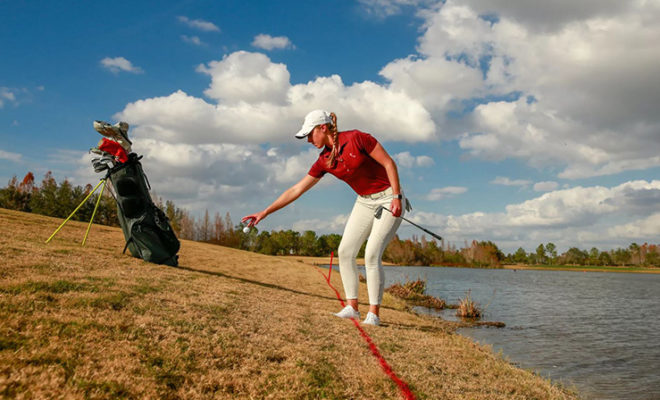Less Is More: Local Operators Find Success With New Tee Time Intervals

If you space them, they will come.
Many course operators have long functioned under the assumption that getting players off the first tee as quickly as possible is the path to financial success. What these savants didn’t admit to is the unfortunate corollary, that the quality of our playing experience is inversely proportional to the compression in tee-time spacing.
Flawed logic. Bad math. Worse outcome.
We’ve been hammered for years as to being vigilant and not dallying, taking three clubs if stuck in some cart-path-only hell and calling ahead for grub before the turn; doing our part to keep pace. Yet our 5:30 rounds outnumber the more expeditious ones by, what, a factor of 10?
The thing is, it’s not just our fault. (Please, do practice aware, ready golf at all times.) And we can have proper 4:00 hour rounds.
It took SARS-CoV-2 to drive that home for many.
“The dispositive issue here is that COVID-19 forced all the public [golf] systems in Southern California to conduct an experiment on a universal scale that none was prepared to run individually because they were panicked that it would reduce the flow of needed revenue: An experiment in 10- to 12-minute tee intervals,” explains Craig Kessler, SCGA governmental affairs director.
When golf re-opened in April, public health mandates required course operators to space out tee times (in addition to other safety practices that have been well documented). For years, the USGA and regional associations like the SCGA have been preaching this spacing protocol, that players going off at slightly longer intervals – forget the dead-man-walking slog caused by course operators who shove a group out every six minutes – will over the course of the day allow more players to get from tee one to green 18, and more players – more happy players – equals more coin.
Golf courses have choke points. Golfers choke. Rough, water, snaphooks, white stakes, back-to-back par 3s followed by a short par 4, overblown expectations – yes, you, Stud, waiting for a par-5 to clear when you’re 250 out but haven’t hit a drive past 200 yards since the first Bush Administration; logjams cannot be avoided. Now shove too many players out too quickly …
Proper tee-time spacing allows for efficiency and recovery when the inevitable happens. It’s called “flow rate,” which a USGA public service video explains as “the rate at which a fluid or mass passes through a specific location during a specific timeframe.” Think of a funnel – or as Kessler suggests, the 405 at 4am versus 7am – through which a specific, peak amount of liquid can pass without backing up and eventually overflowing the cone.
When courses back up after just an hour or two into the playing-day, many golfers choose not to tee it up, knowing that starts from late-morning onward will flow like glaciers pre-global warming. As Kessler notes, however, within tee-time systems that spread the gaps – as we’re experiencing now – mid-day times present “tangible value,” derived because players know they can tee off around noon and still have time to mow the lawn before starting the barbecue for dinner. Later-in-the-day bookings have increased because players know they don’t have to compete for the dew-sweeper slots to experience a timely round. Finally, with good flow later tee times might not need to be discounted.
And golfers want to play golf. The game and the course provide a sense of normal life, and a retreat, and they know it is an activity that can be enjoyed safely in these jumbled times.
“Our utilization is off the charts,” says City of Los Angeles Golf Manager Laura Bauernfeind. “We have reservations from 5:30am to as late as 6:30 at night and some days there are no open spots. Even midweek we are pushing 85-90 percent utilization, which is a significant increase.”
With the reopening, L.A.’s tee times were re-set from eight to 12-minute intervals and then in a few weeks dropped to 10. The initial push was to give the courses time to figure out the logistics of golf in a COVID world, from check-in procedures to ensuring there were no backups anywhere on the courses. The results were staggering.
“Even at Rancho [Park] we are still seeing 4:00 to 4:30 rounds,” Bauernfeind says, with evident pleasure. “I teed off yesterday [a Thursday] in the middle of the day and had zero waits. It was a beautiful thing.”
For mega-popular Rancho an improvement of 60-90 minutes is a sea change, one further aided by pandemic necessities like single-rider carts and more walkers.
Echoes Jeff Ninnemann, SCGA championships and golf operations director: “Southern California has some of the busiest facilities in the nation and going to 10+-minute intervals has produced pace-of-play like they’ve never seen before. This is what has been recommended for some time and whether or not the hand was forced [because of COVID} the effect is a good thing. The golf experience, itself, is better, too, with these significant pace-of-play improvements, and that really is the highlight.”
Players and course operators benefit.
In many ways, at least to me, golf is better in the wake of COVID. Or at least it is happening with less annoying kerfuffle. I miss the valet in the heat but not the Arrival Ballet that seems to involve seven staffers getting my sticks and me from the trunk to the first tee. I love pre-paying for a round, with the EZ check in and not queuing up in the shop behind three foursomes with each paying individually. Hopefully, people will continue to walk, push or pull; golf bike, golf scooter or golf board their way around the course as that greatly improves the rhythm of the game. Seeing the flagstick as toxic and just leaving it be is exactly the tonic needed since too many haven’t embraced the rules allowance telling us to let it be. And who doesn’t like quicker rounds?
There is another lesson from this experience, and it’s far more reverent than my take, as Kessler notes:
“All the verbiage that golf is dying or past its prime, all the chatter in recent years about what’s wrong with the game and what’s needed to save it, that’s all bunk. Golf has endured for 500 years, a lot of things have come and gone, yet golf endures, even with the special challenges of today. We need to remember that.”
Yes, we do.











